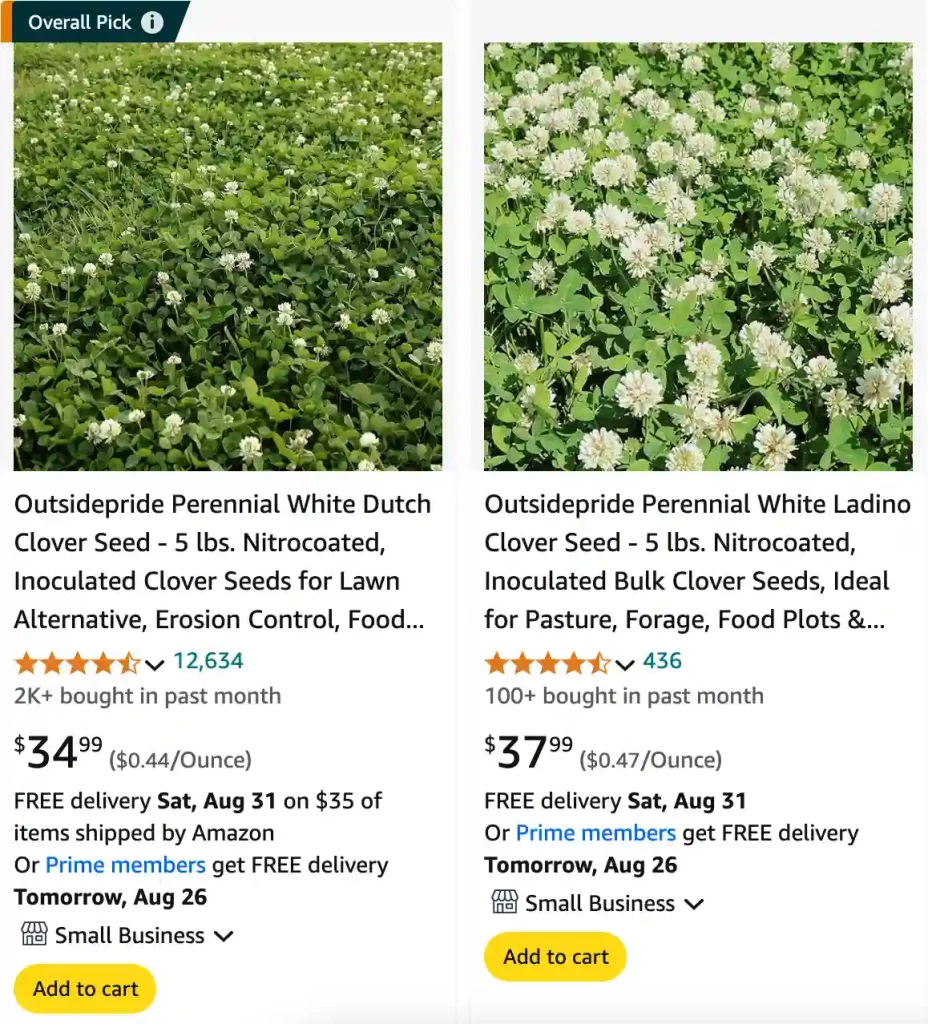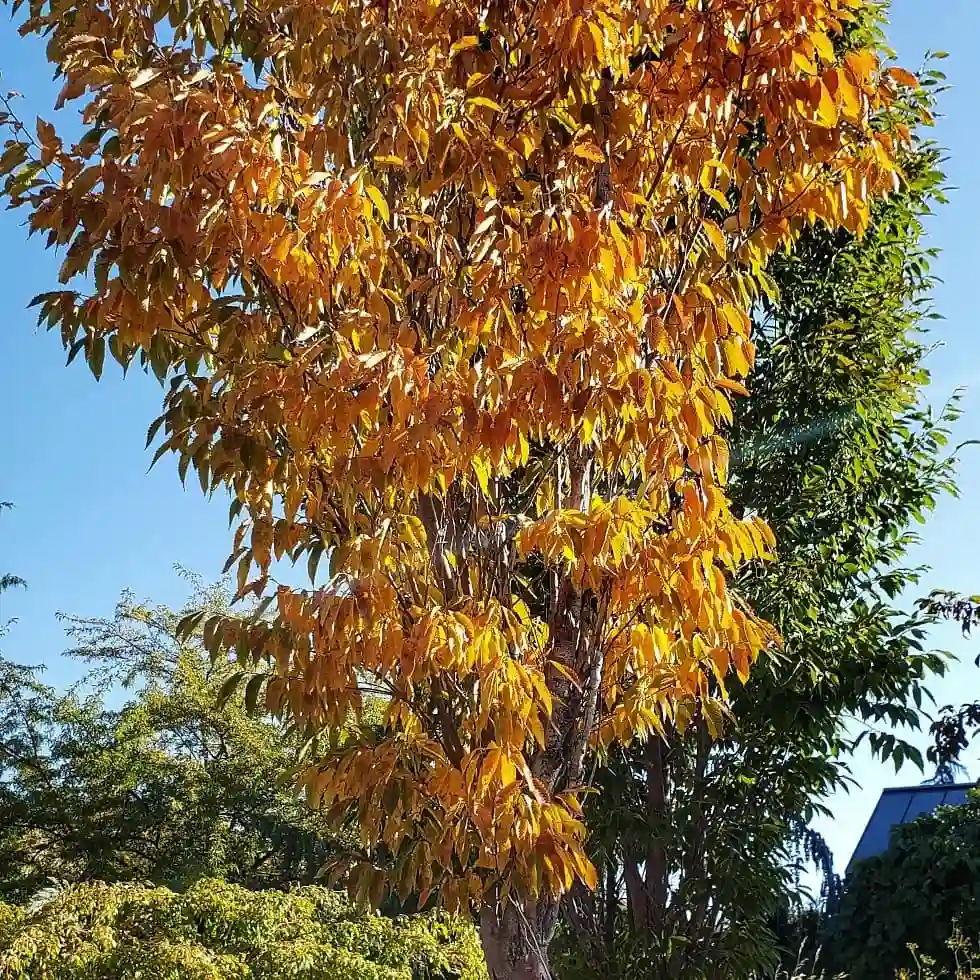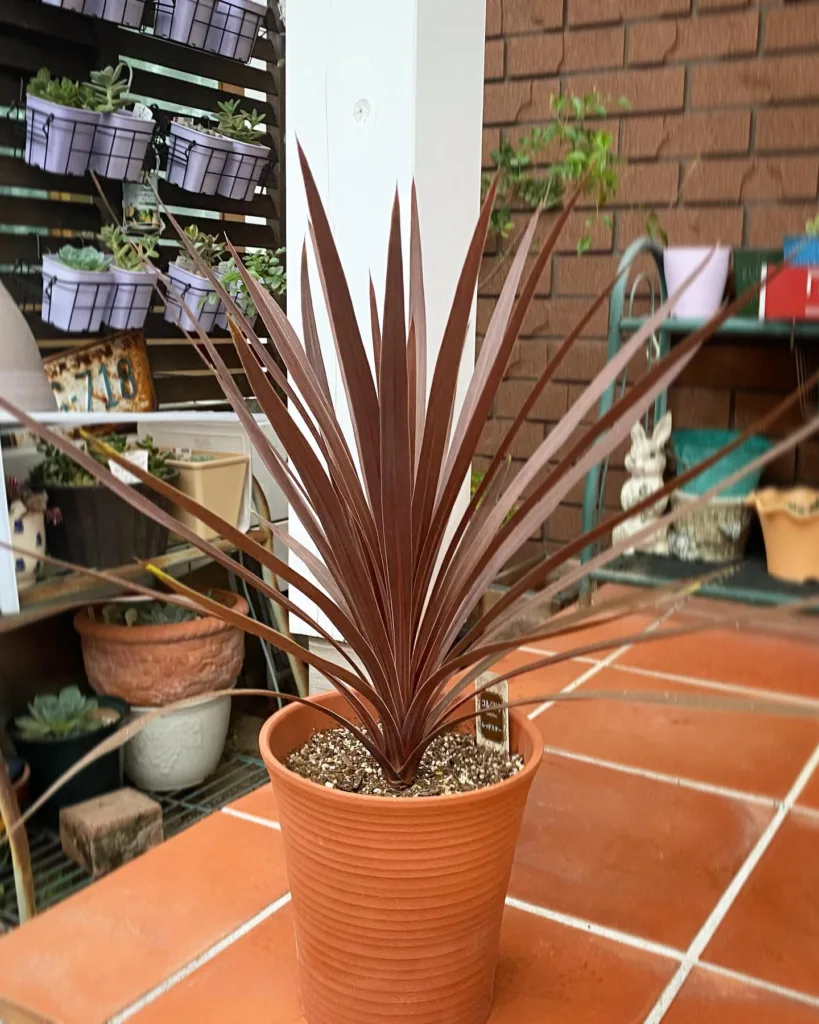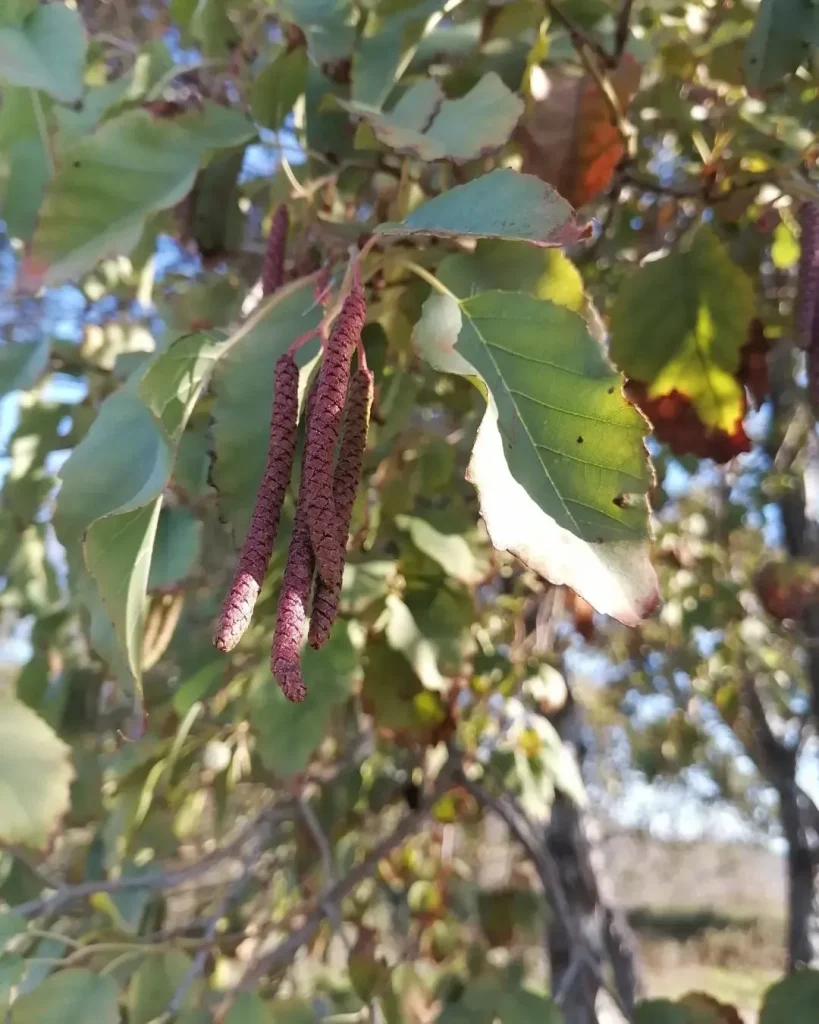
FAQs About White Clover
White Clover is a versatile and often misunderstood plant. As someone who’s had a lot of experience with it, I’ve gathered answers to some of the most common questions about this hardy plant. Here’s what you need to know about White Clover.
306 Species in Genus Trifolium
How to Get Rid of White Clover?
If White Clover is taking over your lawn or garden, you might want to remove it. Here’s what I’ve learned about managing it:
- Manual Removal: Pulling out White Clover by hand is effective, especially if you remove the entire root system. This method works well in small areas but can be labor-intensive.
- Herbicides: For larger areas, you can use a selective herbicide that targets clover without harming your grass. Products with 2,4-D are often recommended. Just be sure to follow the instructions carefully to avoid damaging other plants.
- Improving Lawn Health: A healthy lawn can outcompete clover. Regular fertilization, proper watering, and aeration can help strengthen your grass and reduce clover growth.
When to Plant White Clover?
White Clover is best planted in the spring or early fall. These times provide the optimal temperature and moisture conditions for germination. In my experience, planting during these seasons gives the clover a strong start before extreme temperatures set in.
Can You Eat White Clover Flowers?
Yes, White Clover flowers are edible. They have a mild, sweet flavor and can be used in salads or as a garnish. I’ve added them to teas and baked goods as well. They’re not just tasty; they’re also rich in nutrients like vitamins and minerals.
How Tall Does White Clover Grow?
White Clover typically grows to about 6-12 inches tall. It forms a low, spreading mat rather than growing upwards, which makes it great for ground cover. This growth habit is why it’s often used in lawns and meadows.
Is White Clover Invasive?
White Clover can spread quickly, but it’s generally not considered invasive. In my experience, it can outcompete other plants in lawns if not managed properly. However, it usually doesn’t spread aggressively enough to be considered a true invasive species.
How to Make White Clover Tea?
Making White Clover tea is simple:
- Harvest: Collect a handful of fresh White Clover flowers.
- Boil Water: Heat water to a rolling boil.
- Steep: Add the clover flowers to a teapot or cup and pour boiling water over them. Let it steep for 10 minutes.
- Strain: Remove the flowers and enjoy your tea. You can add honey or lemon for extra flavor.
Is White Clover a Perennial?
Yes, White Clover is a perennial plant. It returns year after year, making it a great choice for ground cover and adding color to your garden each season. It’s hardy and adaptable, which is why it’s a popular choice in many landscapes.
Is White Clover Poisonous to Humans?
No, White Clover is not poisonous to humans. It’s safe to handle and consume in moderate amounts. However, if you have any allergies or specific health conditions, it’s always best to consult with a healthcare provider before consuming it.
Is White Clover Safe for Dogs?
White Clover is generally safe for dogs. I’ve never had issues with my pets interacting with it. However, if your dog consumes a large amount, it might cause mild digestive upset. As with any plant, it’s a good idea to monitor your dog’s behavior and consult your vet if you have concerns.
Can Rabbits Eat White Clover?
Yes, rabbits can eat White Clover. In fact, they love it! It’s a nutritious addition to their diet. I’ve noticed that including White Clover in my rabbits’ diets keeps them happy and healthy.
How Long for White Clover to Germinate?
White Clover seeds typically germinate within 7-10 days. It’s important to keep the soil consistently moist during this period to ensure successful germination. From my experience, keeping the area well-watered helps the seeds sprout quickly.
How Much White Clover Seed Per Acre?
For seeding White Clover, use about 6-8 pounds of seed per acre. This ensures even coverage and healthy growth. I’ve found that this rate provides a thick, lush clover stand.
White Clover vs. Microclover
Microclover is a smaller variety of White Clover. It has finer leaves and a lower growth habit, making it ideal for lawns where you want a subtle, less noticeable clover presence. I prefer Microclover for a more refined look compared to the traditional White Clover.
White Clover vs. Red Clover
Red Clover is taller and has larger, red-purple flowers, while White Clover is shorter with white flowers. Red Clover is often used for forage and soil improvement, whereas White Clover is more common in lawns and ground cover. Each has its unique uses based on your needs.
White Clover vs. Alsike Clover
Alsike Clover is similar to White Clover but with pinkish flowers and a slightly different growth habit. Alsike is more tolerant of wet conditions compared to White Clover. Both are great for improving soil health, but they have slightly different environmental preferences.
White Clover vs. Crimson Clover
Crimson Clover has striking red flowers and grows taller than White Clover. It’s often used as a cover crop due to its ability to fix nitrogen in the soil. White Clover, on the other hand, is more suited for ground cover and lawn use.
White Clover vs. Dutch Clover
Dutch Clover, or White Dutch Clover, is very similar to White Clover but is often bred for specific characteristics like disease resistance. Both are used for similar purposes, but Dutch Clover may offer improved performance in certain conditions.
White Clover vs. Grass
White Clover can be used as a lawn alternative or complement to grass. It’s low-growing and fixes nitrogen in the soil, which can benefit the grass. I’ve found it works well mixed with grass for a lush, green lawn.
White Clover vs. Miniclover
Miniclover is a smaller version of White Clover, with even finer leaves and a more compact growth habit. It’s ideal for those who want the benefits of clover without it being too noticeable. Miniclover is often used in high-traffic areas or lawns.
White Clover vs. Strawberry Clover
Strawberry Clover has pink flowers and a slightly different leaf shape compared to White Clover. It’s not as common but can be used for ground cover and to attract pollinators, much like White Clover.
White Clover vs. Yellow Clover
Yellow Clover, or Trifolium aureum, has yellow flowers and a different growth habit compared to White Clover. It’s less common and not as well-suited for lawns but can be used in wildflower gardens.
How to Care for White Clover?
White Clover is relatively low-maintenance. Regular mowing helps keep it from flowering too much and spreading. It prefers well-drained soil and moderate moisture. I’ve found that it thrives with occasional fertilization and good air circulation.
How to Propagate White Clover?
White Clover propagates easily from seeds. Simply scatter the seeds over prepared soil and lightly rake them in. Keep the soil moist until germination occurs. For larger areas, you might use a seed spreader for even coverage.
What to Plant with White Clover?
White Clover pairs well with grasses, especially in lawns. It also complements other ground covers and can be used in wildflower mixes. I’ve had success planting it with ornamental grasses for a lush, diverse landscape.
Common Problems with White Clover
White Clover can sometimes suffer from fungal diseases, especially in wet conditions. Regular monitoring and proper garden hygiene can help prevent issues. Additionally, it can attract pests like aphids, so keeping an eye out for these is crucial.
Benefits of White Clover
White Clover improves soil health by fixing nitrogen, which benefits surrounding plants. It’s also a low-maintenance ground cover that can reduce weed growth. Plus, it attracts pollinators and can be a tasty addition to your diet.
What is White Clover?
White Clover is a perennial plant known for its trifoliate leaves and white flowers. It’s often used in lawns, as ground cover, and in forage crops due to its ability to improve soil health.
By understanding these aspects of White Clover, you can better appreciate its role in your garden and how to manage it effectively. Whether you’re using it for its aesthetic appeal, soil benefits, or as a food source, White Clover offers many advantages.
If i die, water my plants!



